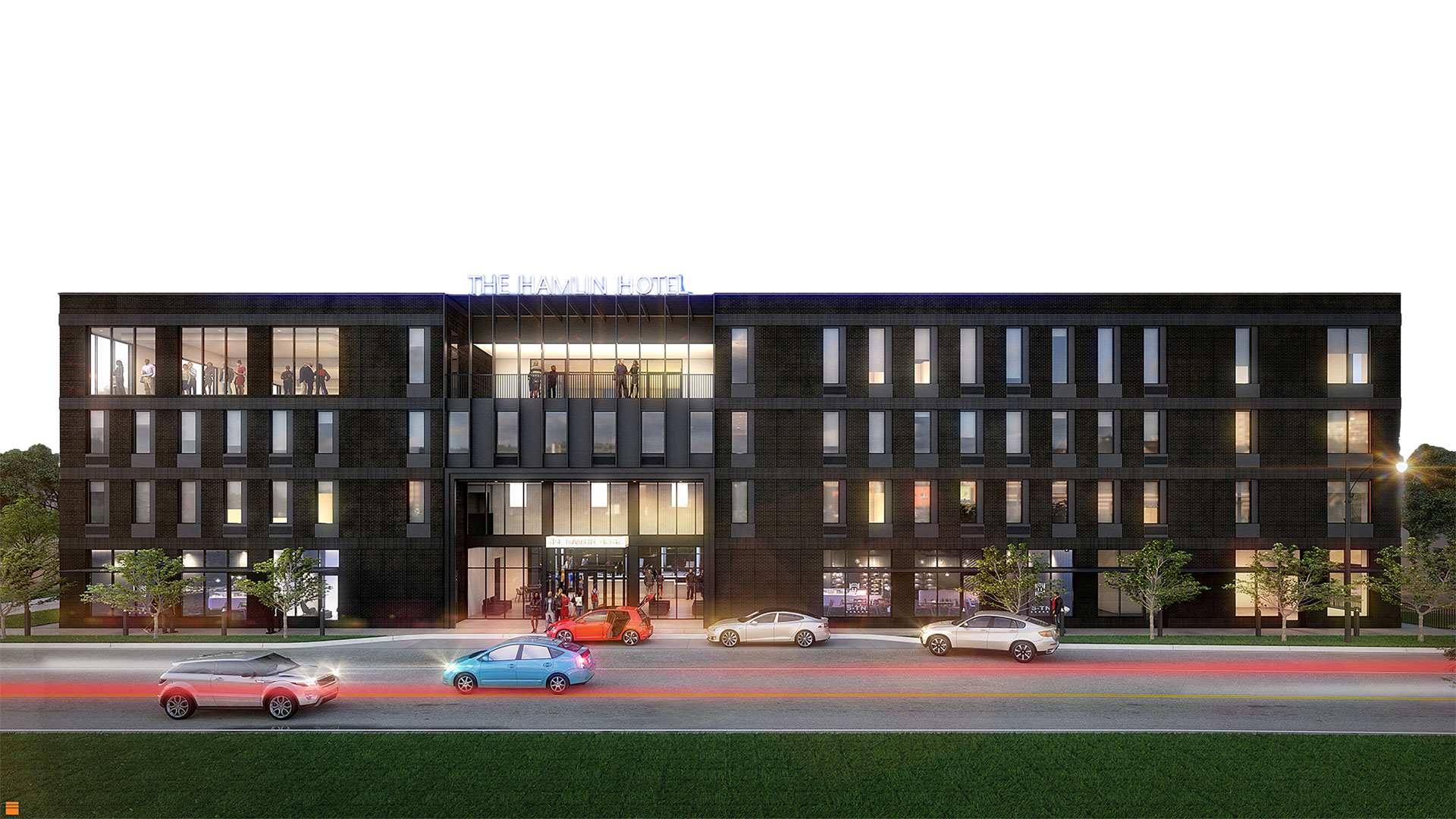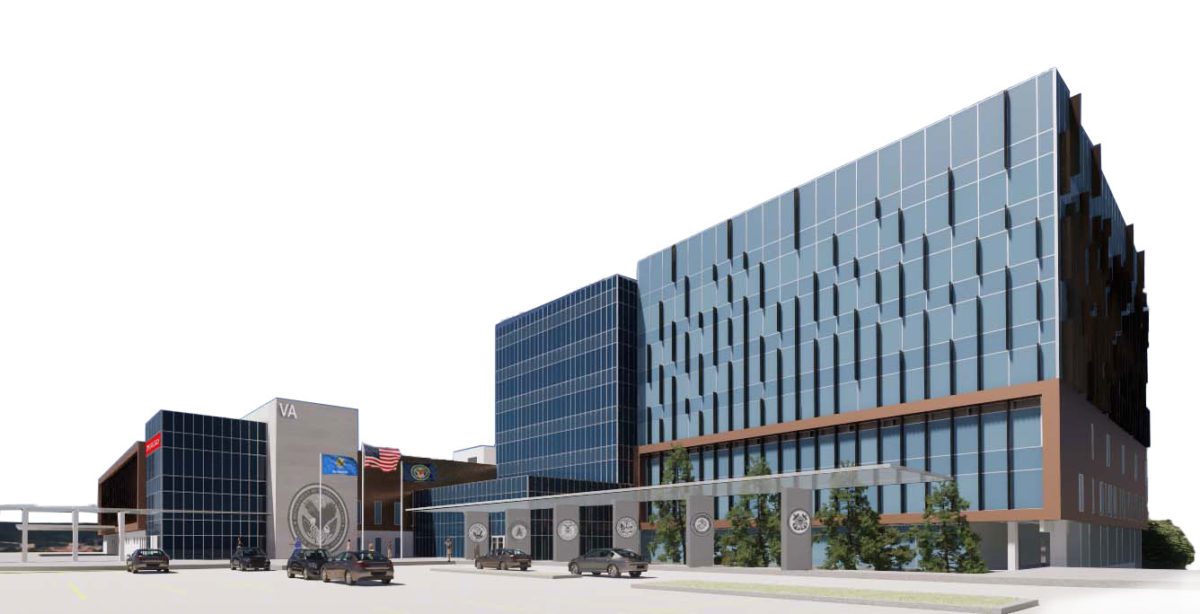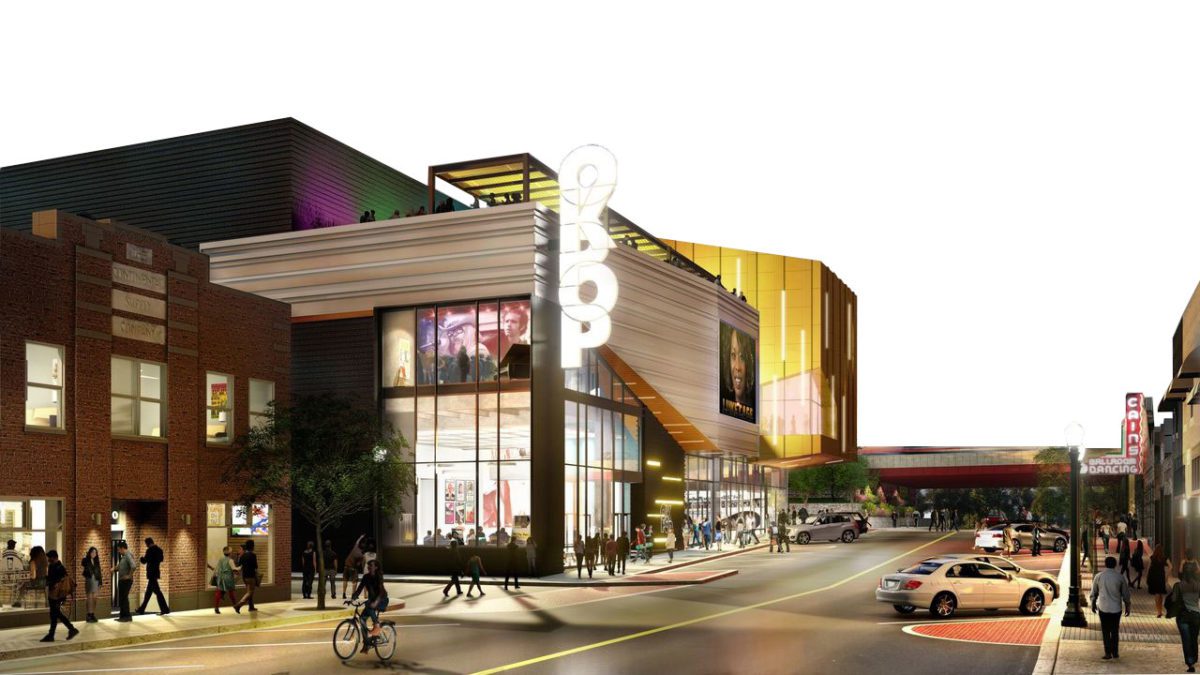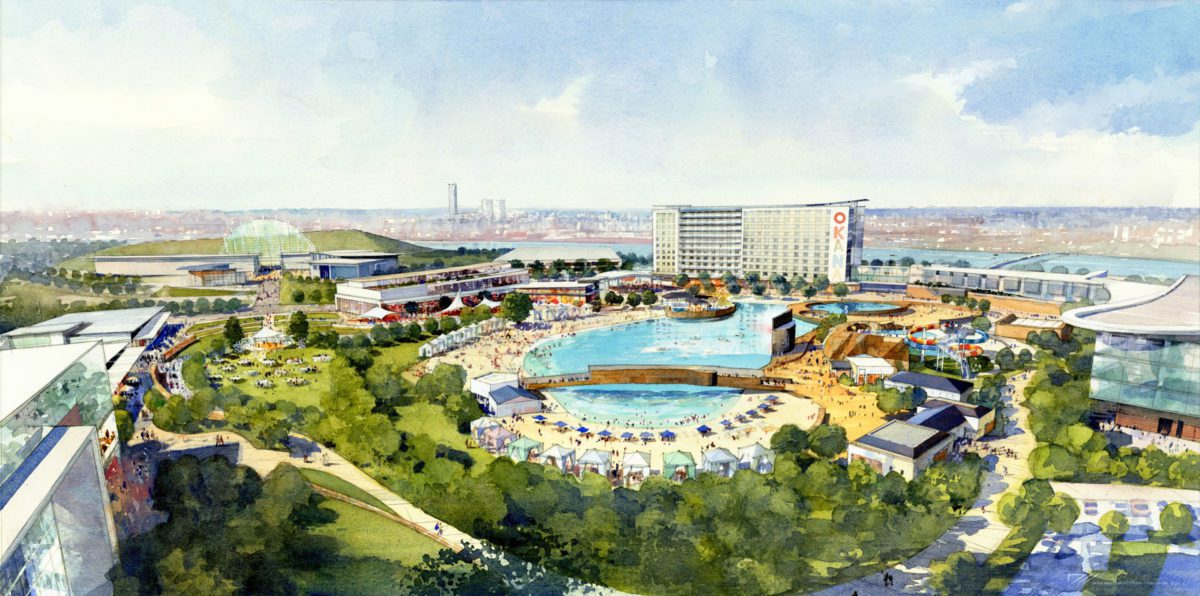Projects to Watch
Veterans Affairs Hospital
With federal and state agencies, Oklahoma State University is converting the Edmondson Kerr building, located on its medical center campus, into a 58-bed VA hospital. The $130-million project will serve the Tulsa metro area, home to 65,000 veterans. The project marks the development of OSU’s Academic Medical District, which will be the site for a new psychiatric hospital, updated clinics and an expanded medical center.
“In a matter of three years, we’ve gone from [having] a single hospital in downtown to getting close to a billion dollars of investments in medical and research facilities,” says Brian Kurtz, president and CEO of the Downtown Tulsa Partnership. Construction began in Oct. 2021, with an expected 2025 opening.
OKPOP Museum
OKPOP has become one of the most anticipated developments in downtown Tulsa. The museum, which is dedicated to exploring the creative spirit of famous Oklahoma artists and public figures, was originally slated to open in 2021. However, the project has experienced setbacks. In 2022, the foundation appointed a new chairperson, D. Scott Petty, who will lead efforts to fundraise the remaining $30 million that is needed to complete exhibit installations.
The OKPOP Foundation now aims for a grand opening in late 2024. Once complete, OKPOP will chronicle the state’s influence on pop culture through three levels of interactive, immersive exhibits.
Santa Fe Square
The Santa Fe Square will transform the block between First and Second Street and Greenwood Avenue in Tulsa into a teeming, walkable, work-play hub. The 12-story tower will include a mix of apartments, offices, retail spaces and amenities that appeal to young professionals. Developers recently installed a giant LED screen on the east side of the building, which will display digital art and televise popular sporting events.
Vital Energy and law firm Hall Estill leased four floors of its office spaces earlier this year. Santa Fe Square is currently on track to lease retail spaces and apartments beginning in 2024.
OKANA Resort & Indoor Waterpark
The OKANA Resort and Indoor Waterpark is an ongoing development that will transform the stretch of land along the Oklahoma River into a destination for cultural tourism. In 2021, the Chickasaw Nation announced the $300 million riverfront resort, which will sit adjacent to the First Americans Museum in Oklahoma City.
In addition to an 11-story hotel, OKANA will include an indoor waterpark, lagoon, golf simulator, amphitheater and Native American marketplace. Construction began in Oct. 2022, and the resort is estimated to open in spring 2025.
Hamlin Hotel
The development of Hamlin Hotel is one small but exciting piece of the Eastpoint project, an initiative meant to revitalize eastern Oklahoma City. The 50,000-square-foot boutique hotel will include 77 rooms, a restaurant, a rooftop bar and a swimming pool.
To support the development of small businesses, the hotel building will also have micro-incubators for restaurants and retail shops. A.C. Hamlin, the first Black Oklahoma legislator, was the inspiration behind the naming of the hotel. Developers expect to complete the project in 2024.
Lower Scissortail Park
In Sept. 2022, the Scissortail Park Foundation celebrated the completion of the southern part of Scissortail Park with a three-day festival of outdoor activities. Funded by MAPS 4, this development has nearly doubled the size of the park. In the Lower Park, visitors can enjoy open, natural landscapes filled with indigenous fauna and trees. There are also several athletic offerings, such as a soccer field, walking trails, and pickleball and basketball courts.
Zac Craig, president and CEO of Visit Oklahoma City, says that the development ties into the city’s vision to design green spaces that stretch from the core of downtown to the shore of the Oklahoma River.
“It’s really gratifying to see both residents and visitors intermingle and enjoy this space together,” he says.
District Breakdowns
What makes downtown Oklahoma City and downtown Tulsa so unique? Their distinct districts. We take a look at a few.
OKC:
At the behest of local business owners, Oklahoma City launched a new district: the West Village District. The area, which is in the southwestern part of downtown, hinges on the notion of blending the old with the new. Visitors can stay in what used to be a Ford Factory at the 21c Hotel. Similarly, the Jones Assembly, a dining and music venue, occupies a renovated two-story manufacturing building from the 1920s.
Nestled in the district’s boundaries is also the Historic Film Row, which was once home to major film companies like MGM and Paramount Pictures.
Located north of Bricktown, the Deep Deuce pays homage to OKC’s African American roots and creativity. The district was a Black neighborhood that eventually grew into a mecca for blues and jazz musicians during the 1920s and 1930s. Jazz guitarist Charlie Christian and big band act the Oklahoma City Blue Devils got their starts in the Deep Deuce. Ralph Ellison, author of Invisible Man, also lived and worked in this part of the city.
Other districts: Adventure, Asian, Automobile Alley, Boathouse, City Center, Paseo, Plaza, Stockyards City, Uptown 23rd, Western.
Tulsa:
The influence of the 1920s can be seen in Tulsa’s Deco District. Located in the heart of downtown, this district is known for its art deco architecture, earning many of the buildings that fall within its boundaries a spot on the National Register of Historic Places. One of these buildings is the Philcade, which houses the Art Deco Museum on the ground floor. Tulsa Tours and the Tulsa Foundation for Architecture regularly hold art deco walking tours for those who are interested in learning more about the city’s history and distinct architectural style.
Tulsa’s Blue Dome District also nabbed a spot on the National Register of Historic Places in 2011. In the early 1900s, many businesses cropped up in this area because of nearby railroads. Activity grew even more after Route 66 was built in 1926. Best known for its eye-catching blue dome, the 24-hour White Star Service Station became a hotspot for Route 66 travelers, offering pressurized air pumps and restrooms with hot-and-cold running water. Although the station closed in the 1950s, the building has been repurposed into administrative offices.
The Historic Greenwood District is also undergoing a renaissance at the moment, replete with the John Hope Franklin Reconciliation Park, Greenwood Cultural Center, Greenwood Rising Museum and a host of Black-owned galleries, restaurants and businesses.
Other districts: Arena, Cathedral, East Village, Kendall-Whittier, Tulsa Arts.
Ask the Experts
Over the last decade, Tulsa and Oklahoma City leaders developed billions of dollars’ worth of infrastructure that revitalized their downtowns. Zac Craig, president and CEO of Visit Oklahoma City, and Brian Kurtz, president and CEO of the Downtown Tulsa Partnership, facilitated these efforts by collaborating with developers and construction groups across many projects. They share their thoughts about what’s next.
Q: What would your dream downtown entail?
BK:The dream downtown is one where all people feel welcome. It has neighborhoods that exist on their own, and it’s a place where visitors come to experience an immense number of cultural activities. It provides the amenities, services and experiences that are required to keep people entertained, safe and active.
ZC: I think we’re building it right now. There have been so many people that have really focused on quality of life, brand initiatives and product development to get us to where we’re at, and that’s why we’re seeing so much tremendous growth – not only in Oklahoma City, but in the state. People are starting to realize what kind of natural and visitation assets that we have.
Q: What do you think are necessary developments for the state in the next 10 years?
BK:We need to continue investing in quality facilities and quality public places to keep our state and our region competitive. While there’s a great deal of importance in improving our streets and infrastructure, we need to be investing even more in parks, public spaces, and civic and cultural facilities to really sustain a dynamic and beautiful lifestyle for Oklahomans.
ZC: I would turn to our community. I think our mayor has done an incredible job of turning to Oklahoma City’s communities…to find the right projects – specifically with MAPS. I think that if we continue to listen to the community and our residents and be very transparent with the process, then I think the future is very bright for us.
Q: What are you most excited to see happen downtown?
BK: It’s a culmination of things. During the pandemic, there was a three-year period in which we consistently had at least one crane in the [downtown Tulsa] skyline. We’re seeing the results of that work now, with the completion of the office tower at Santa Fe Square… 21 North Greenwood, OKPOP and the condominiums at Davenport Lofts. For every large-scale project, we have businesses opening – new mom-and-pops and James Beard restaurants – across our community. What excites me is that we are back to our 2019 level of visitors across downtown. People are back. They’re visiting our restaurants, our shops, our venues and our cultural amenities.
ZC:The OKANA Resort is not only a 400-room resort, but I would say that it’s transformational; I think it’s really going to enrich our visitation economy. [There’s also] a new multi-purpose stadium that we’ve already broken ground on and a brand-new coliseum at the Oklahoma City fairgrounds, so we can continue our legacy as horse show capital of the world. [We’re] also really putting a spotlight on Clara Luper’s story as one of the very first [activists] to spark the sit-in movement in the coming years as well. It’s hard to just dial into one thing because there’s so many good things on the horizon.




























